23 historic shipwrecks you can still see today
Beautiful ships cast adrift
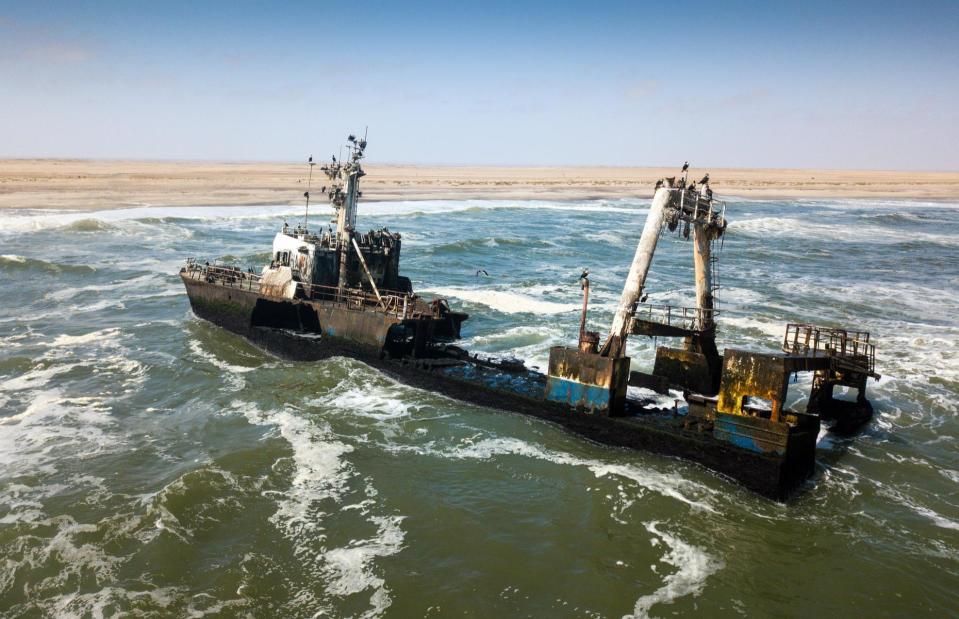
Natalia Golovina/Shutterstock
There are few things more fascinating, tragic and eerie than a shipwreck, whether purposefully sunk for scuba-diving exploits or the devastating result of freak weather conditions. Here we take a look at some stunning images of the world’s most spectacular shipwrecks caught on camera, including the newly-discovered medieval wreck found in Norway's largest lake.
Dimitrios, Peloponnese, Greece
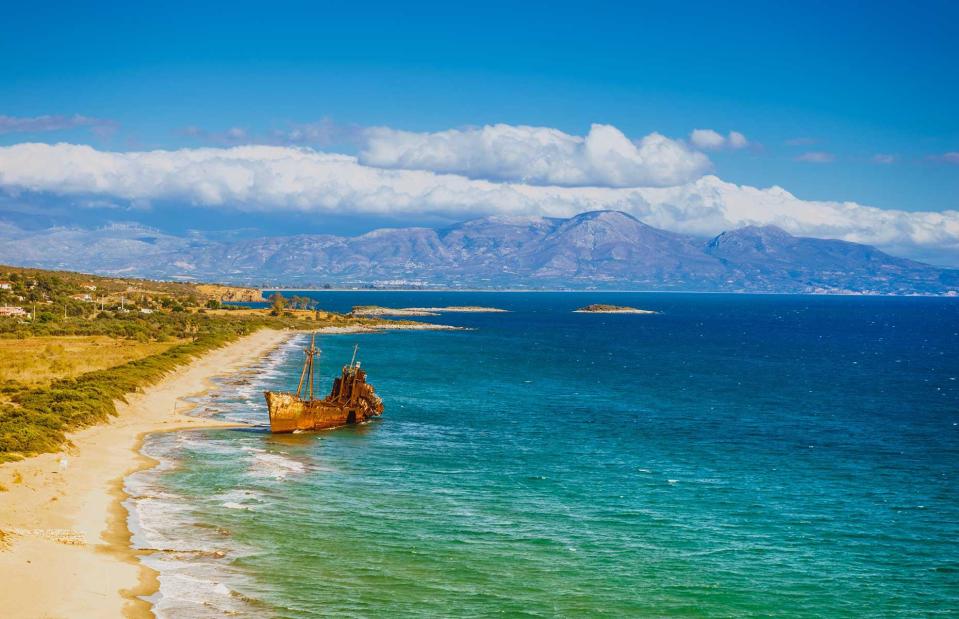
Voyagerix/Shutterstock
The Peloponnese, the leaf-shaped region that dangles from the edges of mainland Greece, has it all: stunning sandy stretches, glorious mountains and turquoise seas. It’s also home to the rusting hulk of the shipwreck Dimitrios, located on the area's eastern shore near the charming port town of Gytheio.
Dimitrios, Peloponnese, Greece
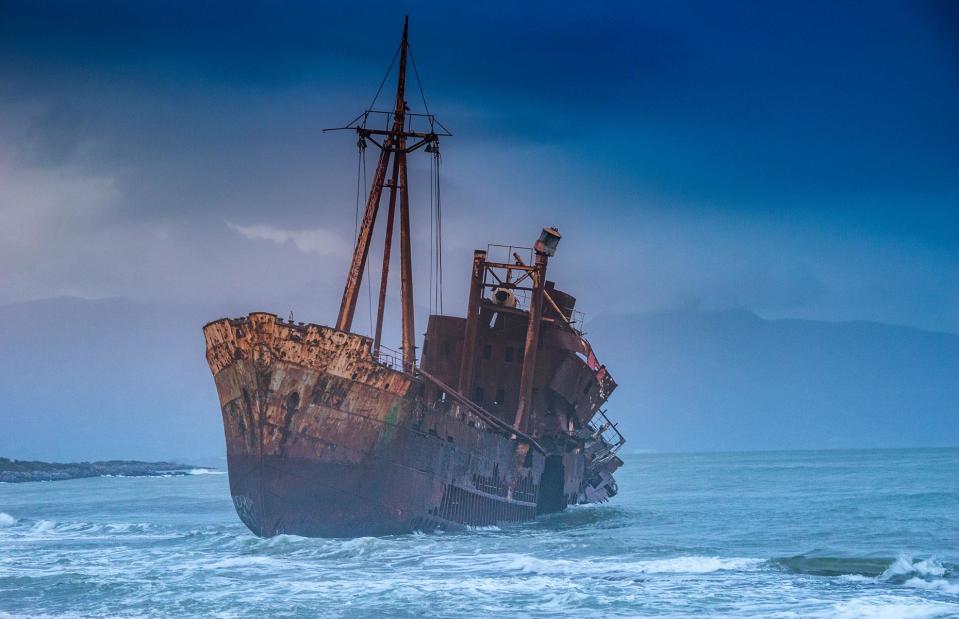
Pit Stock/Shutterstock
How the ship came to be there is something of a mystery. Some reports say it was caught up with the smuggling of cigarettes and burned to mask the evidence, others that it was simply abandoned. Whatever the true story is we do know that the Dimitrios has been lurking on these shores since 1981 and has gradually drifted out to its current location. Today it’s a popular wreck with photographers thanks to the accessible beach.
Corpach Wreck, Fort William, Scotland, UK
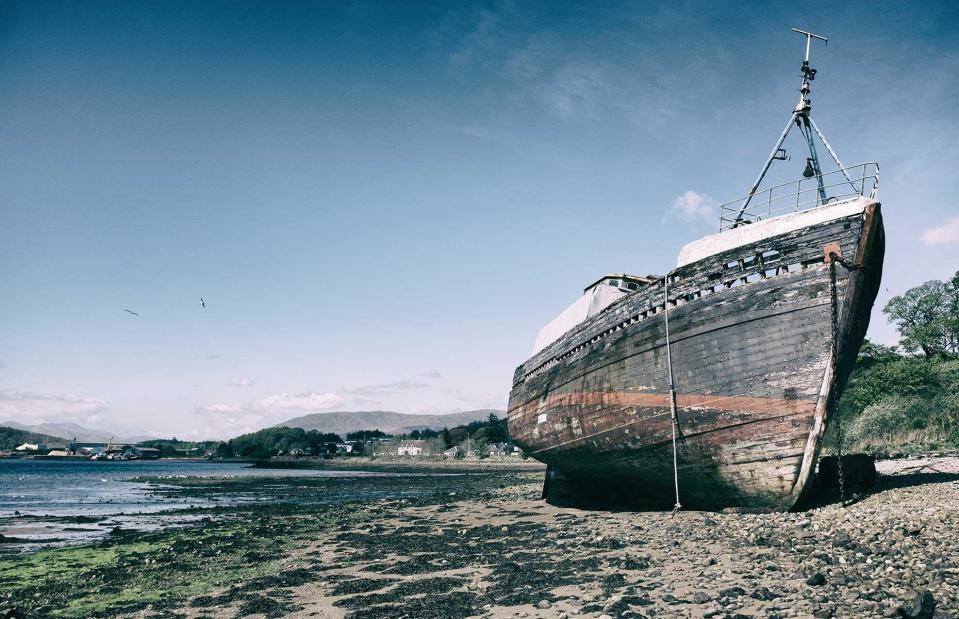
David Marquis/Unsplash
Built in 1975, the fishing vessel trawler MV Dayspring once brought mackerel and herring to the shores of the Scottish Highlands. Last launched in the early 2000s, she had been safely moored for over a decade when she ran aground during a storm on 8 December 2011.
Corpach Wreck, Fort William, Scotland, UK
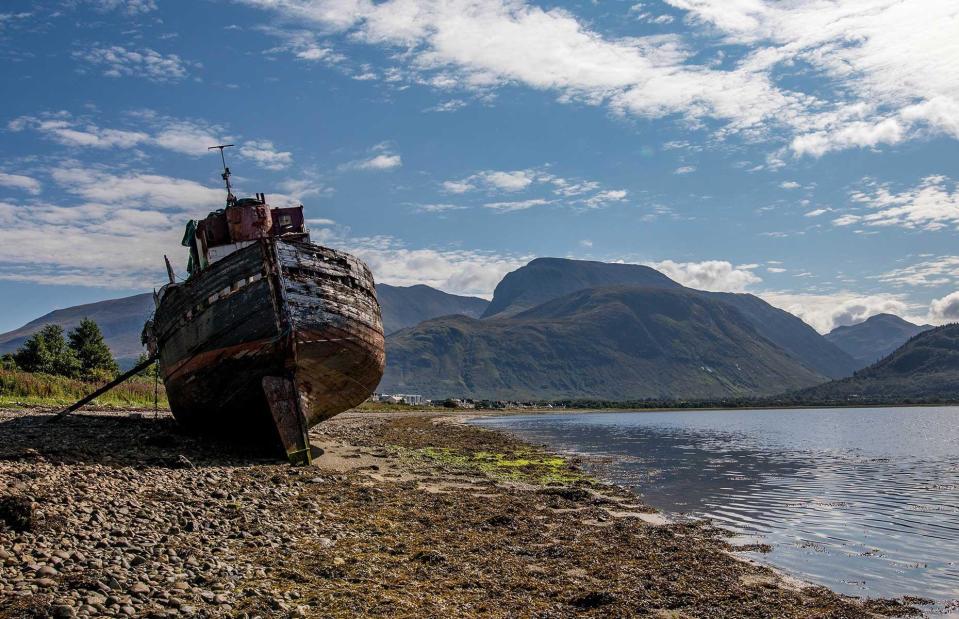
Evenfh/Shutterstock
Today photographers come from around the world to capture what has become known as the Corpach Wreck – it can be pictured with the highest mountain in Britain, Ben Nevis, in the background.
Sweepstakes, Ontario, Canada
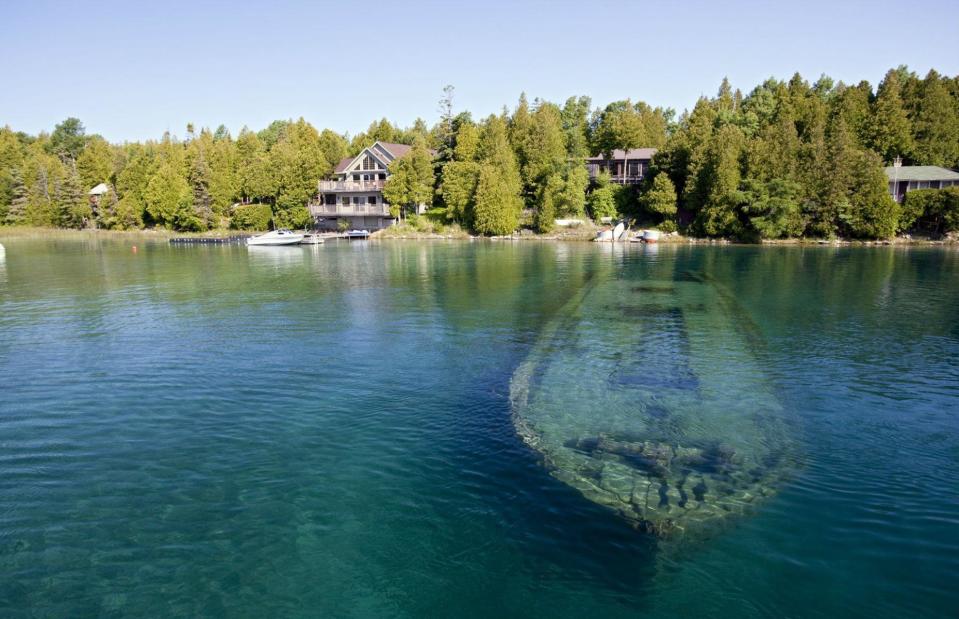
Ontariotravel.net/uk
If you’re fascinated by shipwrecks, head to Ontario’s Tobermory. It's home to more than 25 stunning examples that can usually be explored on diving or snorkelling tours, or aboard a glass-bottom boat. The best known is Sweepstakes, a 119-foot (36m) schooner that sank in shallow water in 1885 after hitting a rock.
Sweepstakes, Ontario, Canada
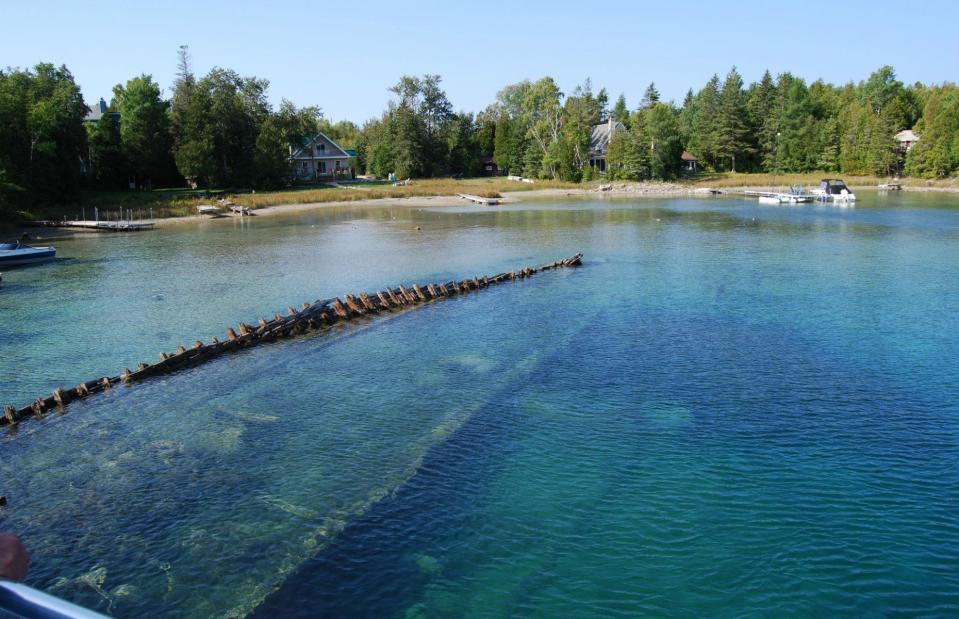
Kibrok Photography/Shutterstock
Sweepstakes remained there for a couple of weeks before being towed into the harbour. After the schooner was examined and found to have sustained irreparable damage, she was stripped of all her useful rigging and equipment. Her hull, windlass and part of the original bow rail are all still intact.
Kodiak Queen, British Virgin Islands
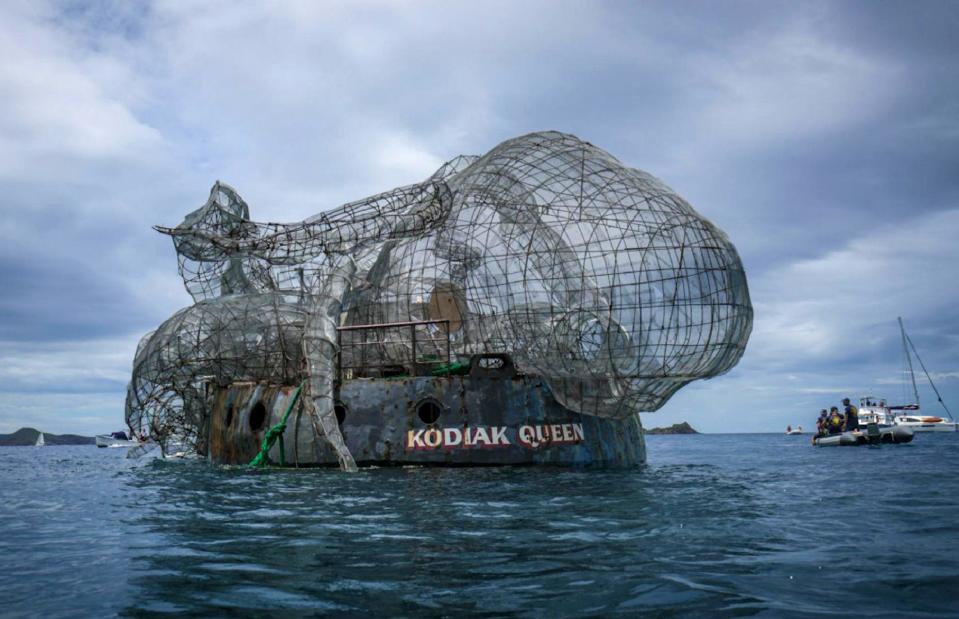
Owen Buggy/bvitourism.com
The Kodiak Queen is an example of how exciting ships can be when they combine history with the future. One of a small group of ships to survive the attack on Pearl Harbor, the vessel was purposefully sunk in the spring of 2017 in the British Virgin Islands to become a man-made scuba-dive site, marine ecosystem and underwater art installation.
Kodiak Queen, British Virgin Islands
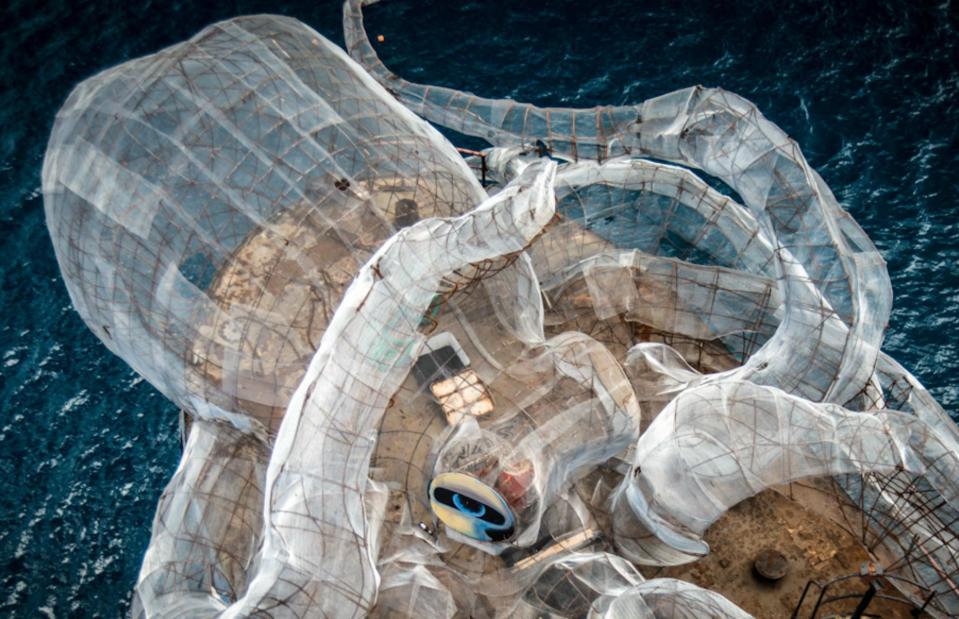
Owen Buggy/bvitourism.com
The historic naval ship, along with its art-sculpture dive site, is a project from Virgin entrepreneur Richard Branson. The now underwater structure not only inspires divers with its eye-catching artworks, but the site is also an artificial reef and marine habitat.
Bessie White, New York, USA
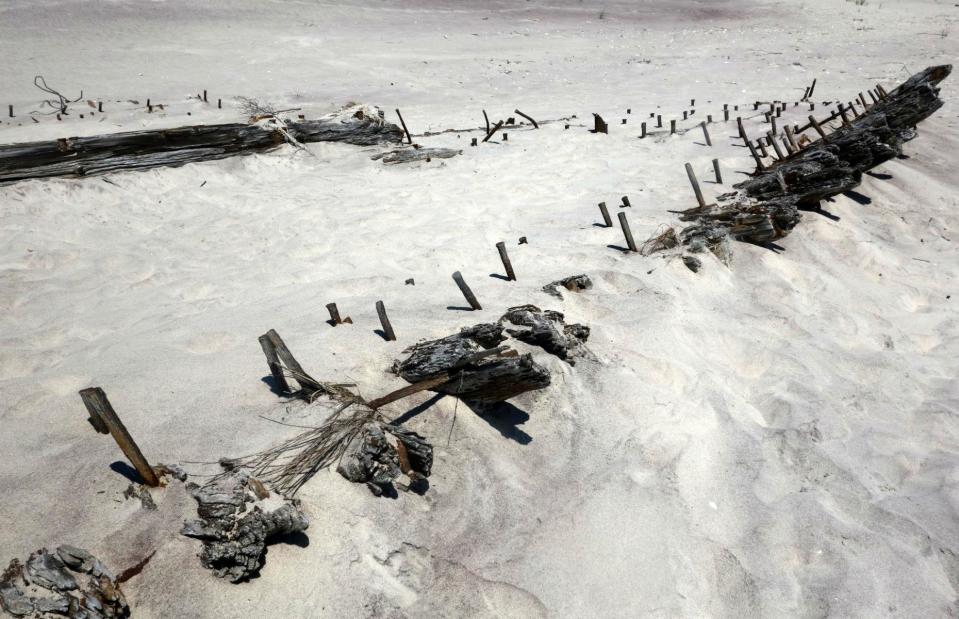
Nick Normal/Flickr/CC BY-NC-ND 2.0
It’s often a storm that causes a ship to meet its end, but, in this case, a hurricane gave an old shipwreck another lease of life. When Hurricane Sandy hit the US in 2012, the storm also unearthed the skeleton of Canadian coal schooner Bessie White, which ran aground on Fire Island in the early 20th century.
Bessie White, New York, USA
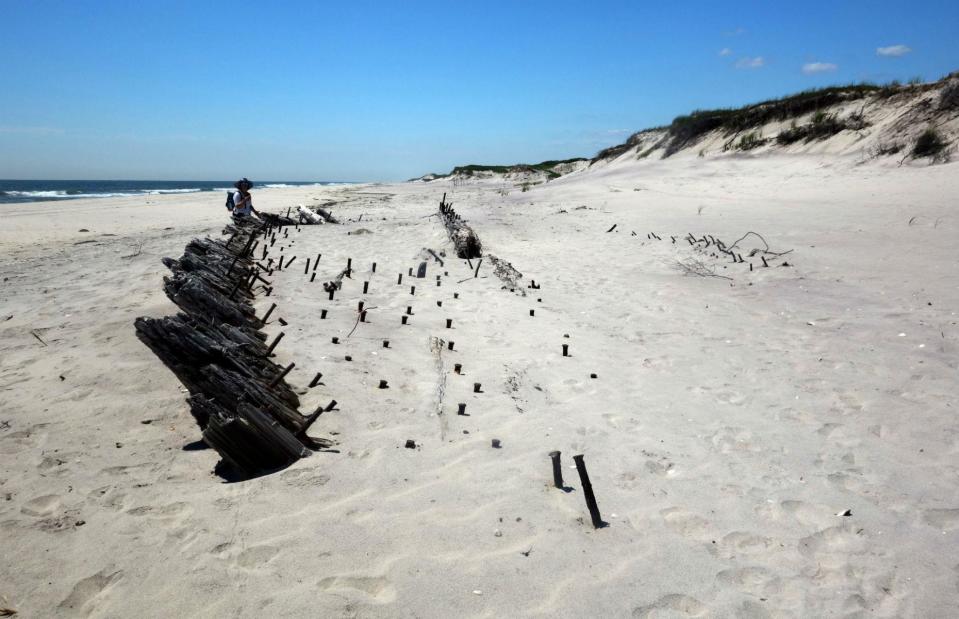
Nick Normal/Flickr/CC BY-NC-ND 2.0
You can easily visit Bessie White on Fire Island by taking a ferry from Long Island, but how much of the wreck you’ll see will depend on the weather. The whims of the wind, waves and sand determine how visible the hull is on any given day.
MV Panagiotis, Zakynthos, Greece
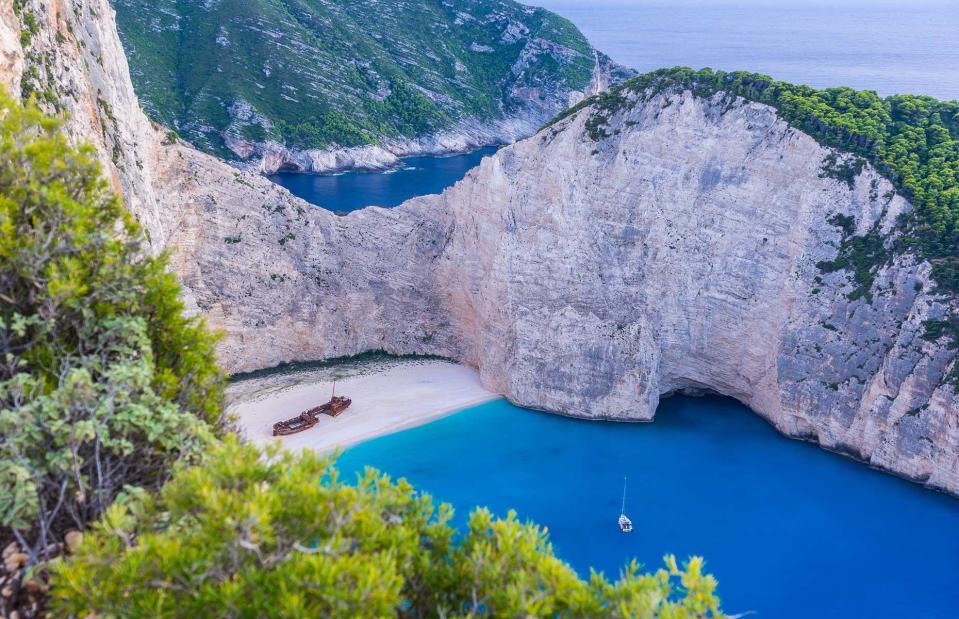
Simon Dux Media/Shutterstock
The MV Panagiotis, on the coast of Zakynthos in Greece, is a major tourist attraction, not just for its well-preserved condition, but also for its idyllic location on Navagio Beach, or “Shipwreck Beach” on the island's northwestern coast.
MV Panagiotis, Zakynthos, Greece
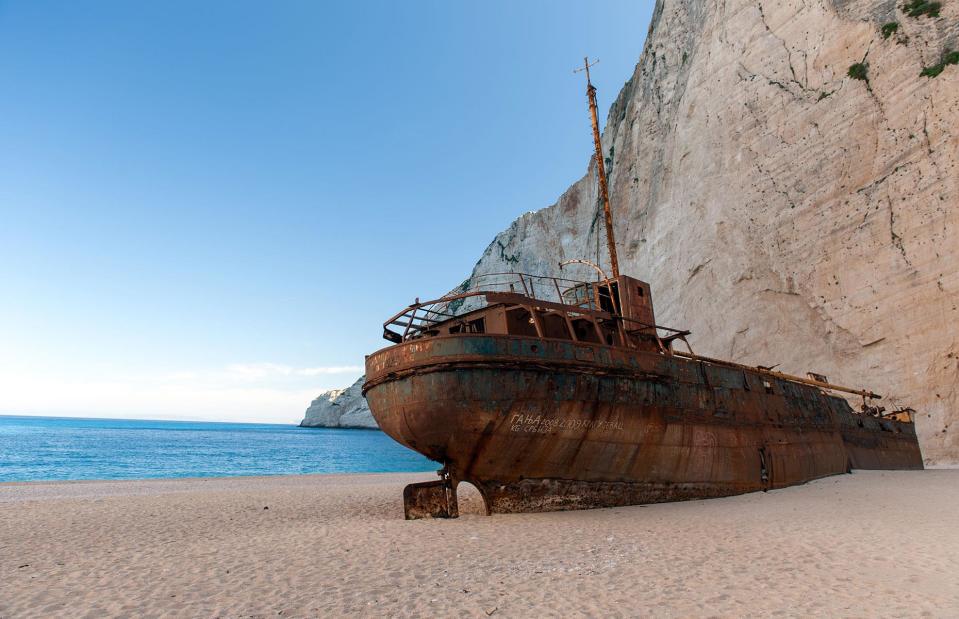
NickKont/Shutterstock
The ship, which was suspected of being a smuggling vessel, was built in the 1930s and ran aground in the 1980s due to stormy weather. Today, it's possible to admire the boat from the high cliffs above or take a boat trip to the beach itself for a close-up view of the rusting hull.
Hilma Hooker, Bonaire, Caribbean
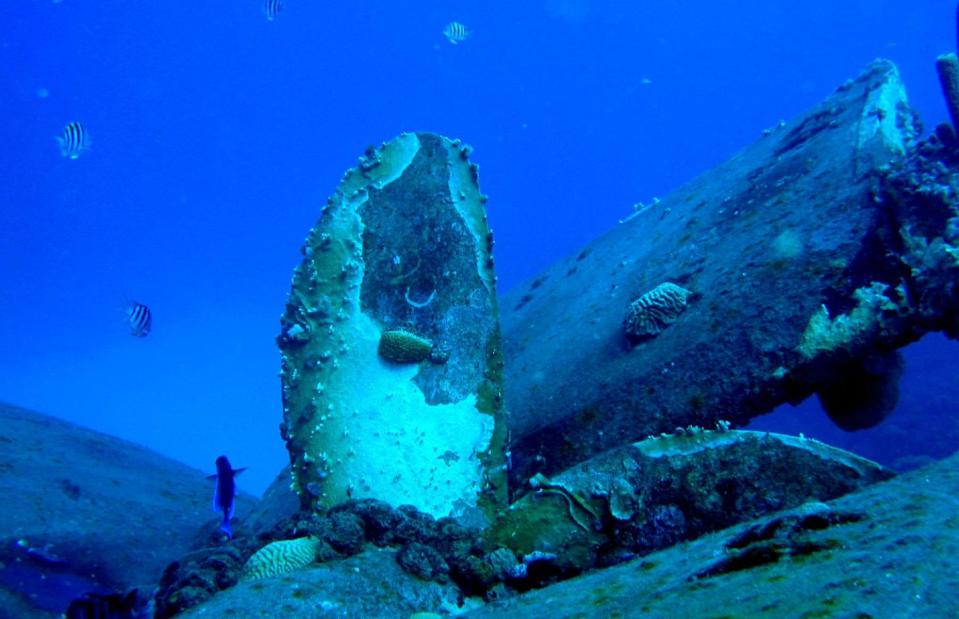
Bernard Horowitz/Flickr/CC BY-NC 2.0
Just one of over 60 spectacular dive sites in Bonaire, the Hilma Hooker makes for a memorable underwater adventure. The 236-foot (72m) Dutch freighter originally sank in 1975, but was rescued and sold on. There are many tales about what happened to the ship in the end. One is that it was suspected of drug smuggling and found to be carrying a sizeable stash of marijuana behind a false bulkhead.
Hilma Hooker, Bonaire, Caribbean
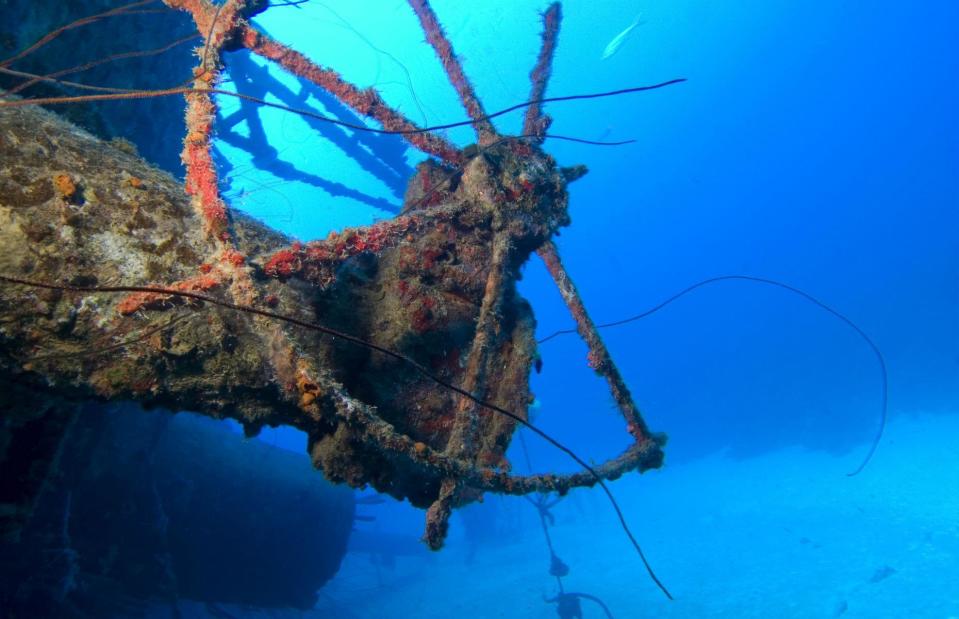
Andrew Jalbert/Shutterstock
Eventually, the ship was left unattended. It was reportedly used as evidence in the drug-smuggling case, but since no one was claiming or maintaining the ship at this point, no one was implicated. In 1984, the ship was moved next to a dive site and five days later, began to sink. It’s now part of the Bonaire National Marine Park and is beloved by divers thanks to its well-developed, untouched and colourful corals.
Mary Rose, Portsmouth, England, UK
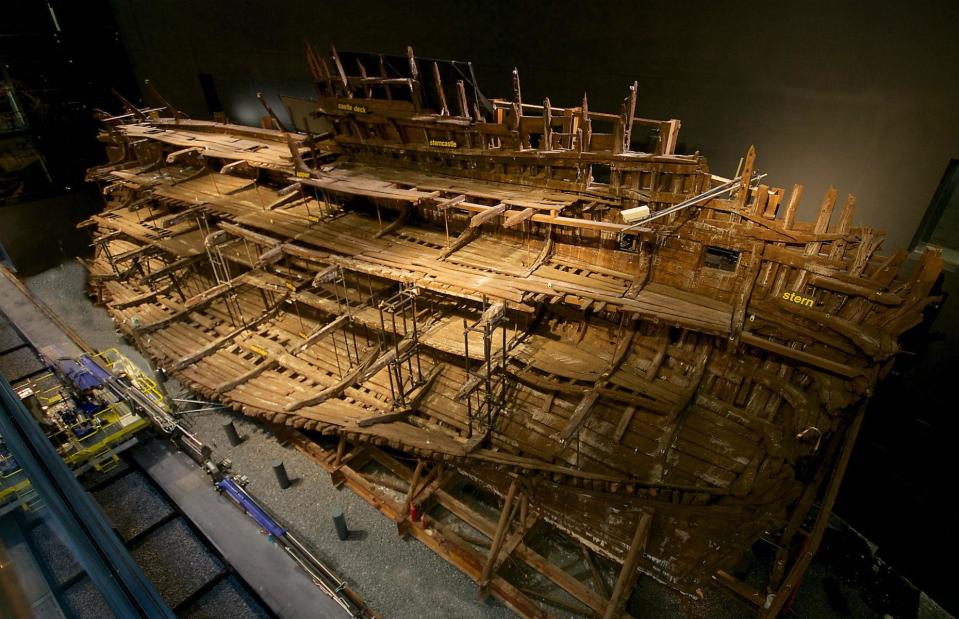
Stephen Foote/Mary Rose Museum
The Mary Rose, Henry VIII’s favourite warship, sank in 1545 during the Battle of the Solent. She served 34 years at sea, seeing several historical moments in her lifetime from transporting troops to northern England for the Battle of Flodden to attacking the French fleet at Brest.
Mary Rose, Portsmouth, England, UK
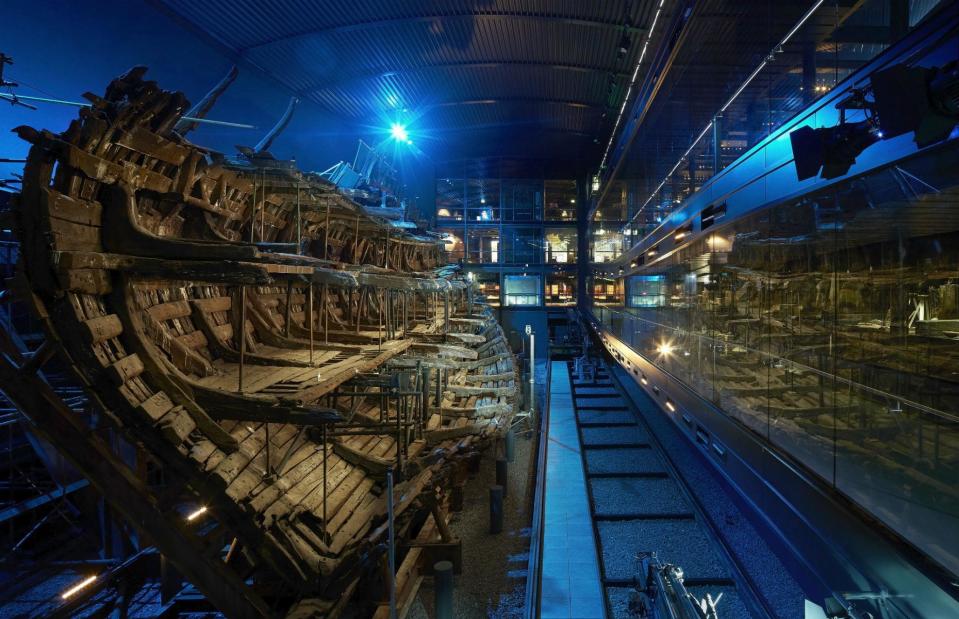
Hufton + Crow/Mary Rose Museum
The Mary Rose was raised from the seabed in 1982 after years of archaeological work and now the historic warship lives in the Mary Rose Museum in Portsmouth. More than 19,000 items were recovered from the wreck site including human remains, guns and clothes. The ship can be viewed close up at the museum, which was redesigned in 2016 to offer visitors an even more immersive experience.
Peter Iredale, Oregon, USA
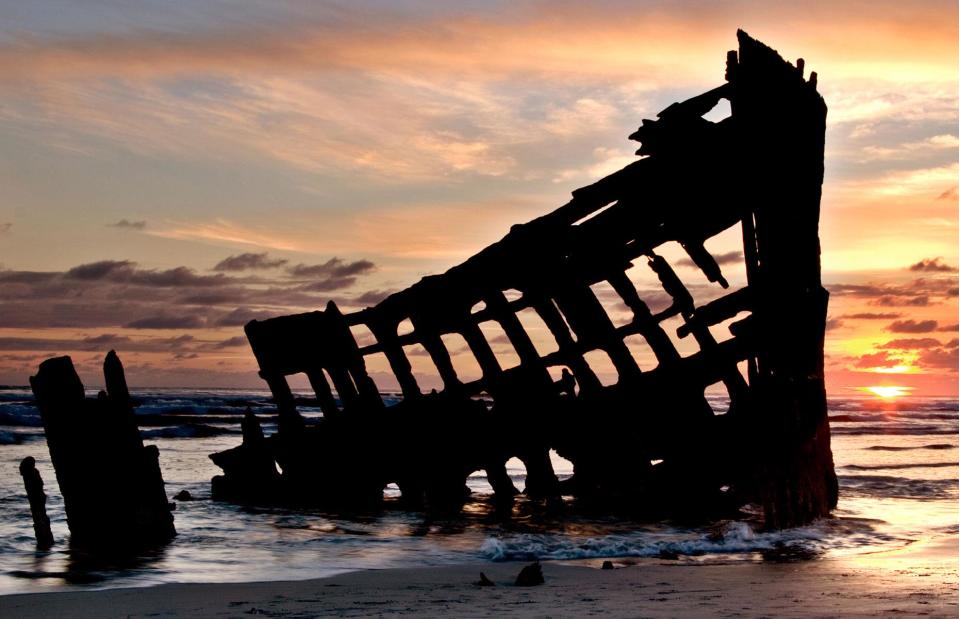
Peter Kunasz/Shutterstock
There are plenty of shipwrecks along the Oregon coastline and the morbidly named Graveyard of the Pacific – but perhaps the best known is the Peter Iredale, which can be found in the historic Fort Stevens State Park.
Peter Iredale, Oregon, USA
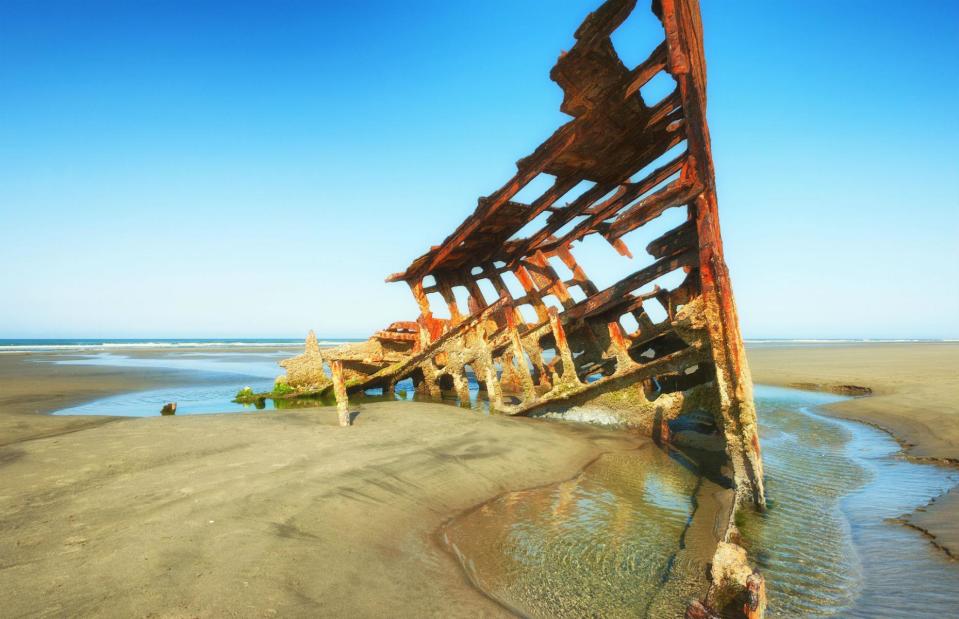
Dee Browning/Shutterstock
The area of coast that leads to the mouth of the Columbia River was notoriously hard to navigate and the ship ran aground in 1906 due to heavy winds. Its rusted and barnacle-clad bow and masts are still intact and visible, poking out of the sand. When the tide is low, you can walk right up to the ship and examine it for yourself.
Pesuta, British Columbia, Canada
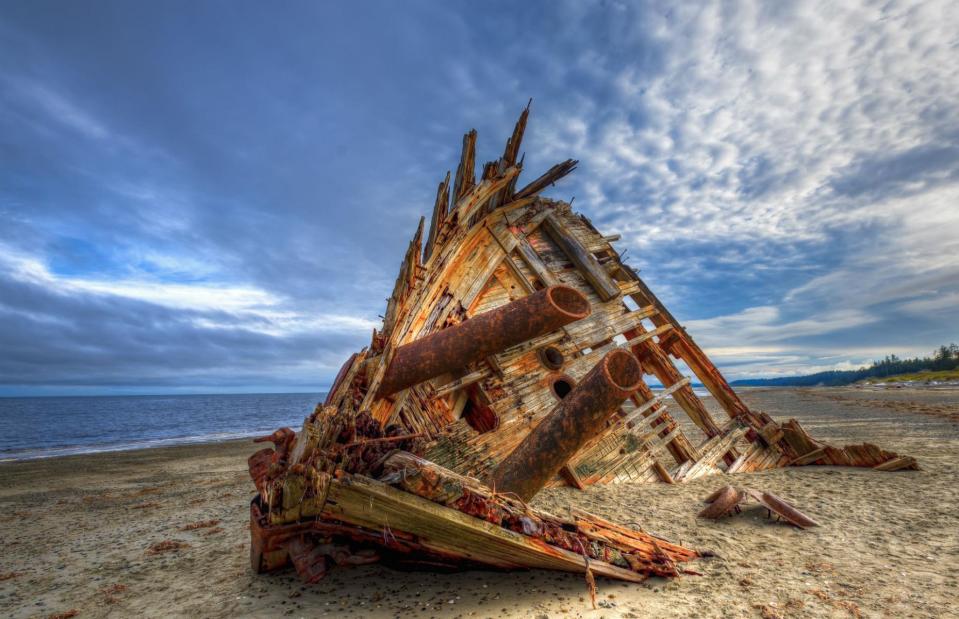
BGSmith/Shutterstock
The Pesuta began life as a steamship before it was converted to a log barge in the early 20th century. After a brutal storm in 1928, it was shipwrecked, ending its life on the picturesque Haida Gwaii archipelago in British Columbia, Canada.
Pesuta, British Columbia, Canada
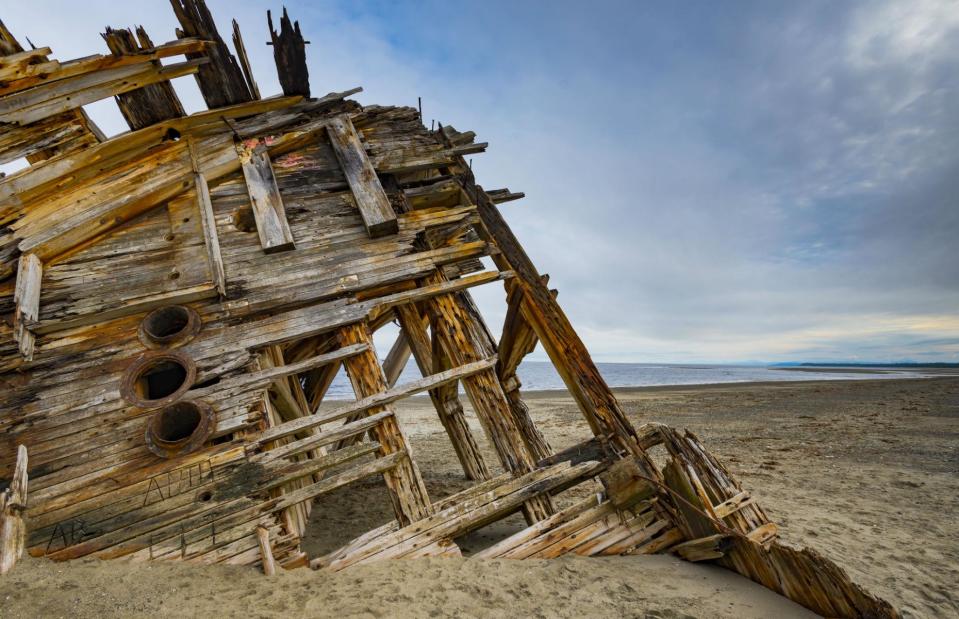
BGSmith/Shutterstock
The remains of the Pesuta are a popular tourist attraction. Getting here involves a four-hour round-trip hike through flat forests and beaches of the Naikoon Provincial Park on Graham Island. Currently the park is open for day-use only.
MV Captayannis, Helensburgh, Scotland, UK
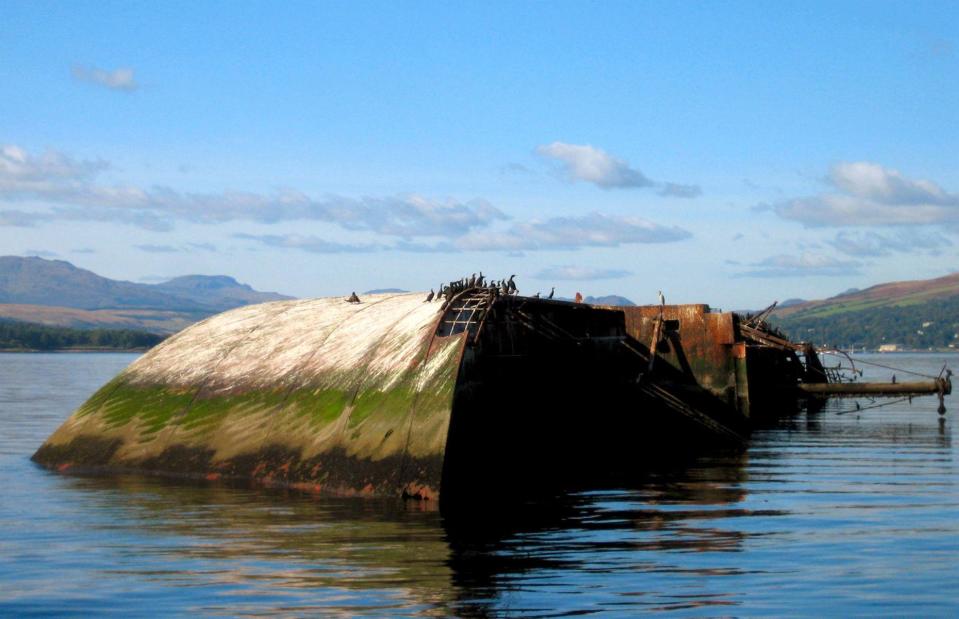
Stephen Thomas/Flickr/CC BY-ND 2.0
Known in Scotland as the “sugar boat”, the MV Captayannis was a Greek sugar-carrying ship that sank in the River Clyde in 1974 after a wild storm.
MV Captayannis, Helensburgh, Scotland, UK
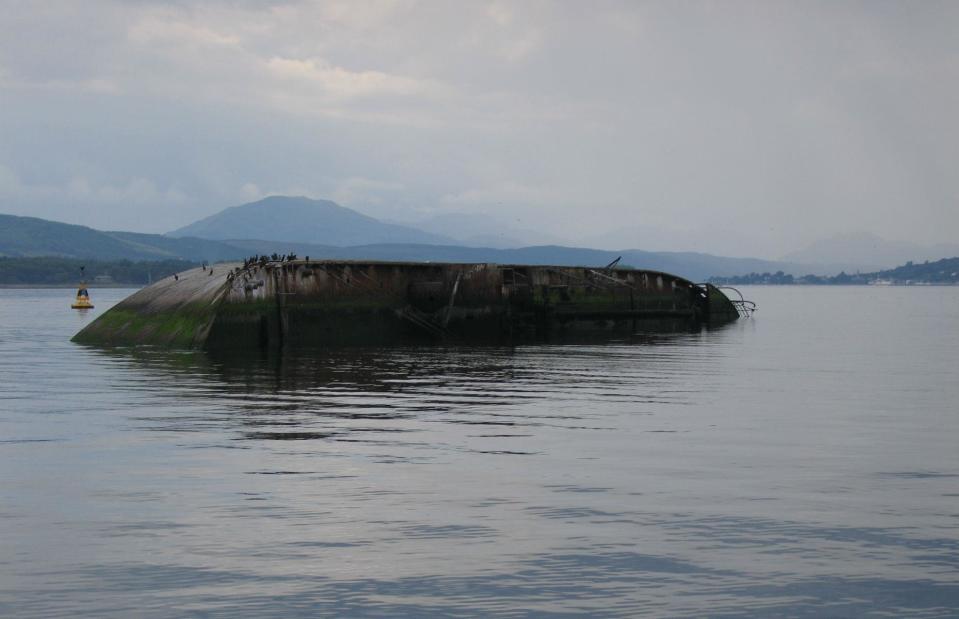
Jan Zeschky/Flickr/CC BY-NC 2.0
The brutal storm forced the ship to roll onto her port side and she’s still that way decades later. Plans to blow up the wreckage were discarded due to worries about the site's proximity to a nearby bird sanctuary. The wreck has never been removed and is now a popular spot with tourists, divers and birdlife alike.
SS Francisco Morazan, Michigan, USA
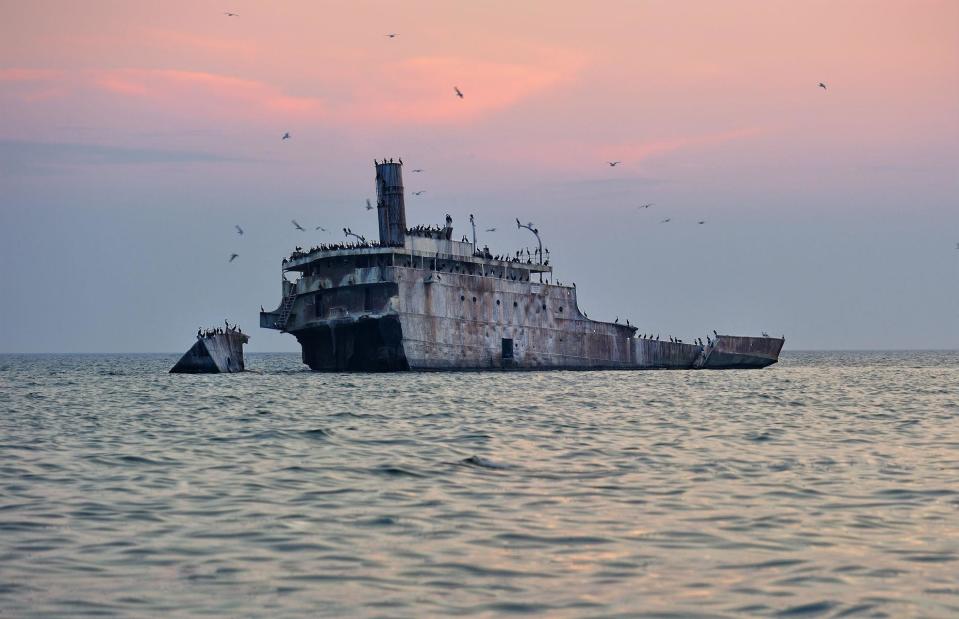
John McCormick/Shutterstock
The SS Francisco Morazan was built in the 1920s for German owners but was sold to various governments over the years. She was to take her last journey in November 1960 from Chicago to the Netherlands.
SS Francisco Morazan, Michigan, USA
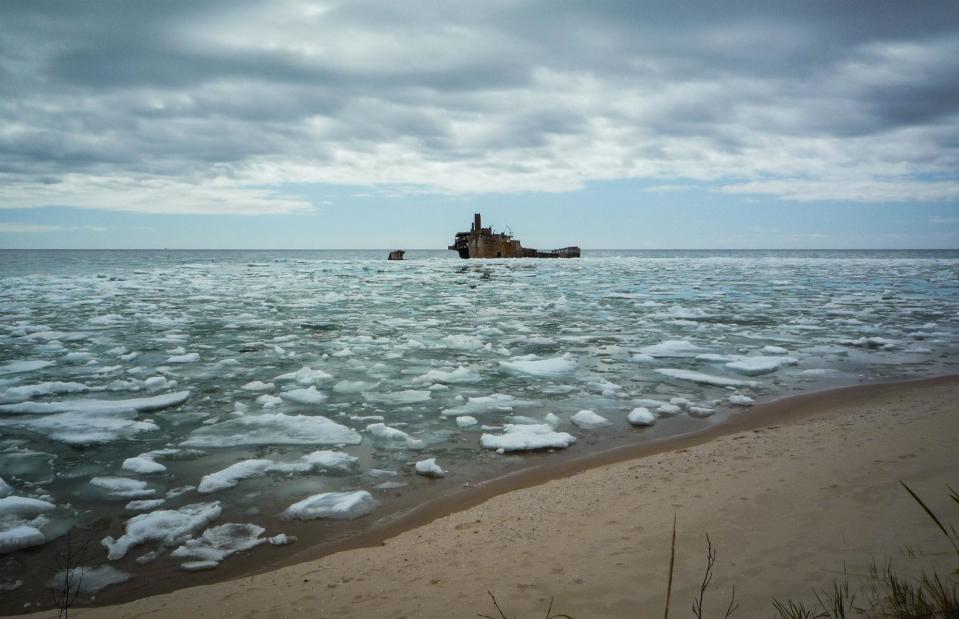
||read||/Flickr/CC BY 2.0
Strong winds, fog and heavy snow caused the ship to run ashore some 300 feet (91m) off the southwest shore of South Manitou Island, Michigan. The crew abandoned ship soon after and the vessel has been there ever since, now home to various species of bird. You can hike to view the ship for yourself from the shore or take out a kayak to see it close up.
RMS Titanic, Canada
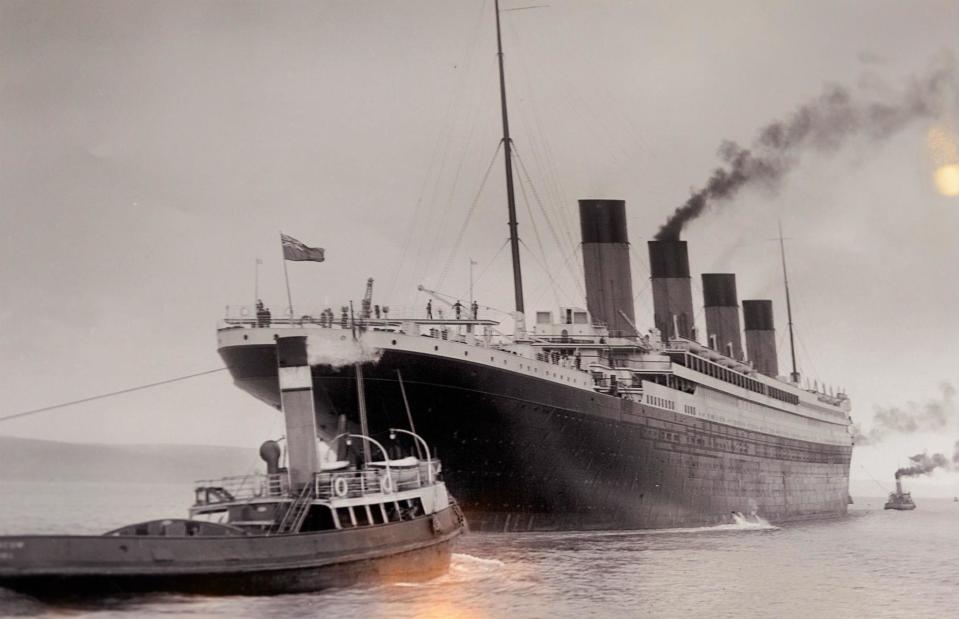
Anton_Ivanov/Shutterstock
It’s probably the most famous shipwreck of all time: the RMS Titanic sank in 1912 after hitting an iceberg, killing more than 1,500 people. The wreckage of the ship was only found in 1985, when it was also discovered that the Titanic had split apart before sinking to the seabed.
RMS Titanic, Canada
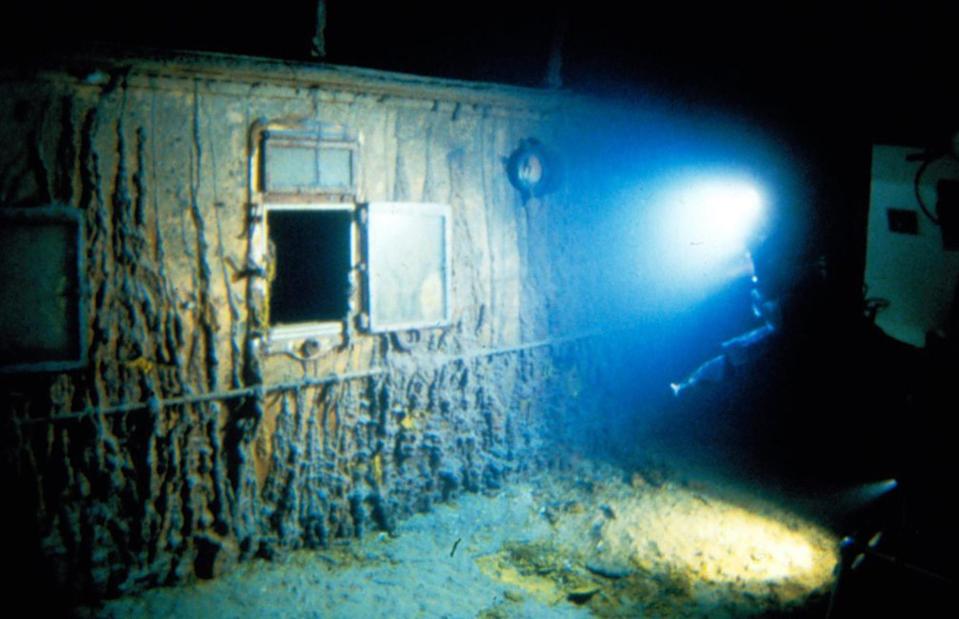
WHOI Archives, ©Woods Hole Oceanographic Institution
In February 2023, never-before-seen footage of the Titanic's wreck was released to coincide with the 1997 blockbuster's 25th anniversary. The 80-minute video, shot in July 1986, reveals what the ship looks like as it sits under 12,400 feet (3,780m) of ocean: covered in seaweed, inhabited only by deepwater fish, but still unmistakably recognisable as the stricken liner from its portholes, railings and once-opulent interiors.
Garðar BA 64, Westfjords, Iceland
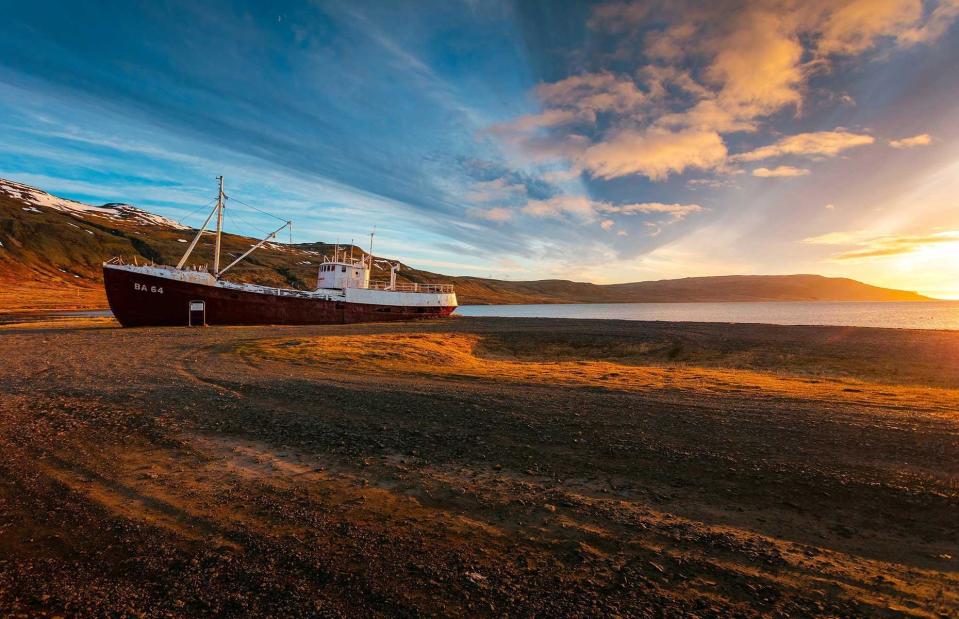
Mahkeo/Unsplash
Once a fishing vessel, the steel ship Garðar BA 64 was built in the same year that the Titanic tragically sank – in 1912. Originally called Globe IV, the former whaling boat is now more than a century old and is rusting away in the stunning surroundings of the west coast of Iceland.
Garðar BA 64, Westfjords, Iceland
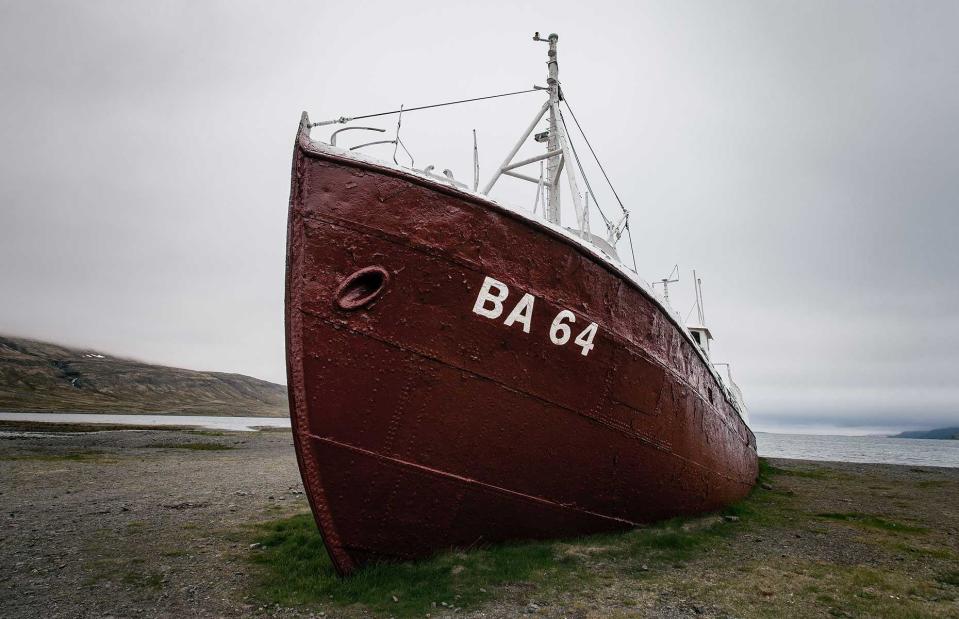
Marco Specht/Shutterstock
The ship has been out of service since 1981 and instead of being scrapped it was run aground in Skápadalur Valley – here it has remained ever since, drawing photographers keen to capture its beauty.
SS Point Reyes, California, USA
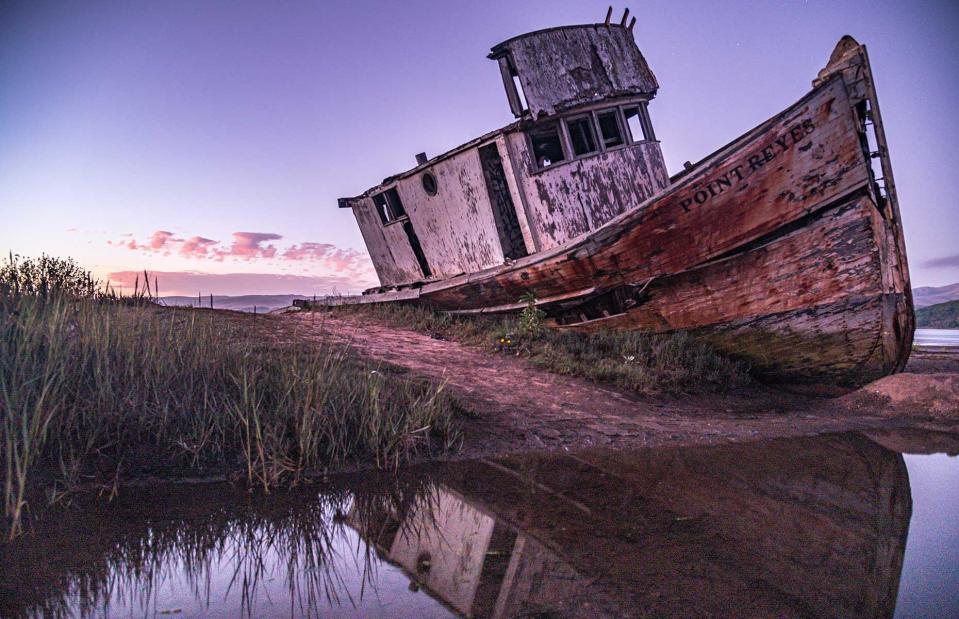
Ian Rizzari /Unsplash
From elephant seals to a magnificent lighthouse, there's a lot to see at the 70,000-acre Point Reyes National Seashore in northern California. In addition to the 1,500 species of plants and animals, there is also the SS Point Reyes, a fabulously photogenic shipwreck, and one of many along this coast of treacherous rocks.
SS Point Reyes, California, USA
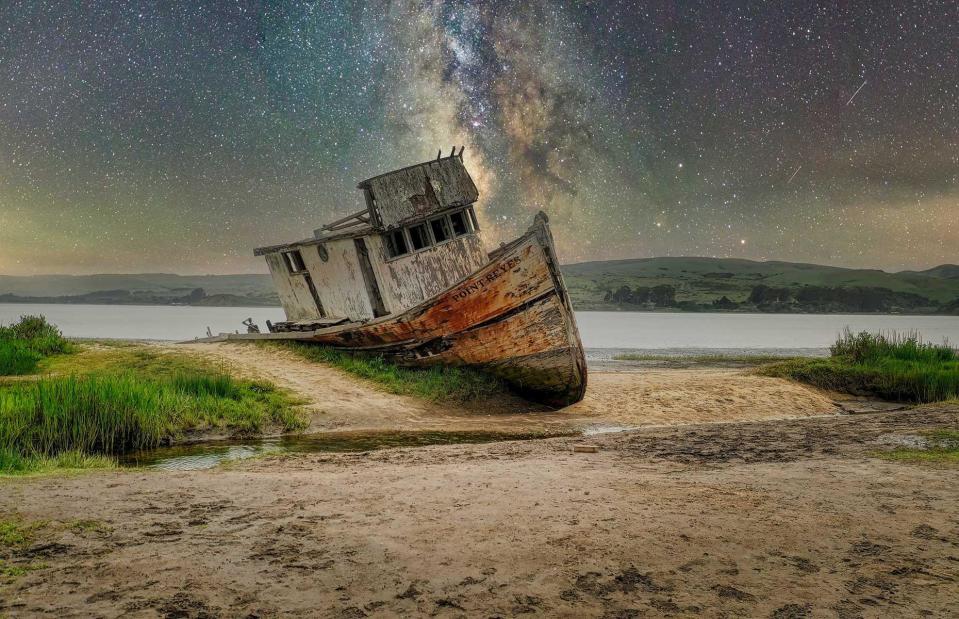
Cameron Venti/Unsplash
Located in Tomales Bay this is another shipwreck that's beloved by photographers, with the best shots taken during low tide. Here the wreck is captured at night by professional photographer Cameron Venti, flanked by the Milky Way. But its popularity also means it's under threat – in 2016 a fire damaged the rear of the ship and the exterior and interior have been graffitied too.
SS Maheno, Queensland, Australia
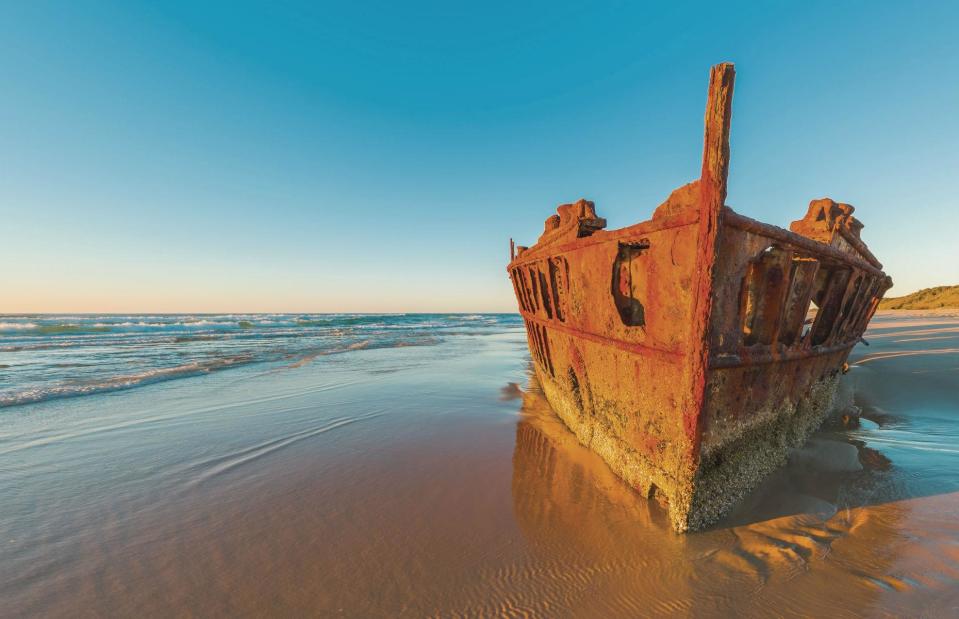
Queensland.com
One of the first turbine-driven steamers, the SS Maheno was built in 1905, and took a regular route between Sydney and Auckland. When the First World War broke out, she was converted into a hospital ship in Europe. Years later, in 1935, SS Maheno was heading for a Japanese wrecking yard when a cyclone caused her to meet an untimely end.
SS Maheno, Queensland, Australia
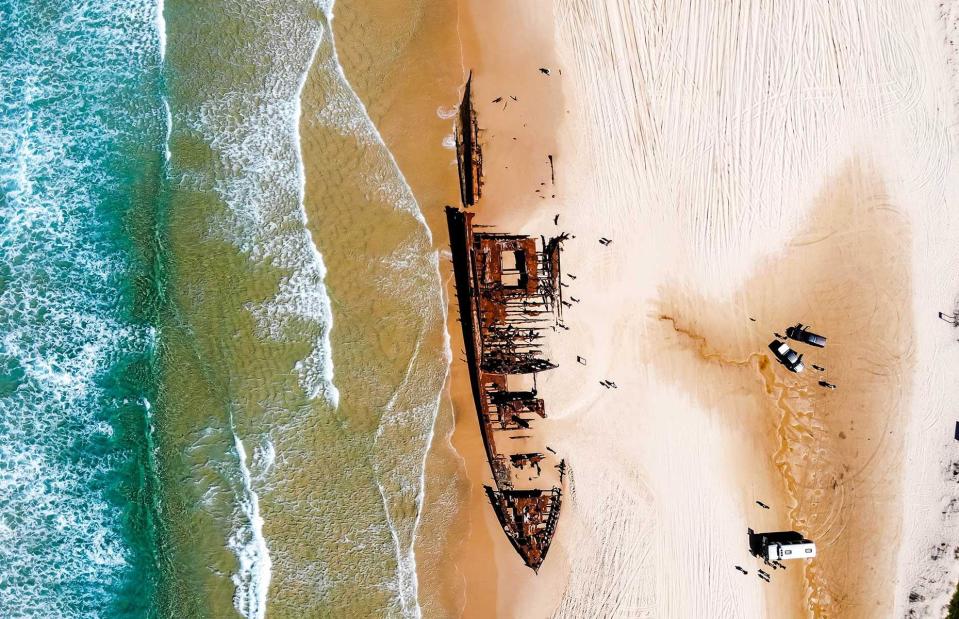
Jarrod Ryan Jooste/Shutterstock
The hull is now the most famous of all the wrecks on Queensland’s Fraser Island and it’s usually easily reached by a 50-minute ferry ride from the Fraser Coast. Although the wreck is slowly deteriorating due to the island’s salty environment, its mainly intact skeleton is fascinating to visit. Here the ship has been captured from above by a drone.
Eduard Bohlen, Namibia
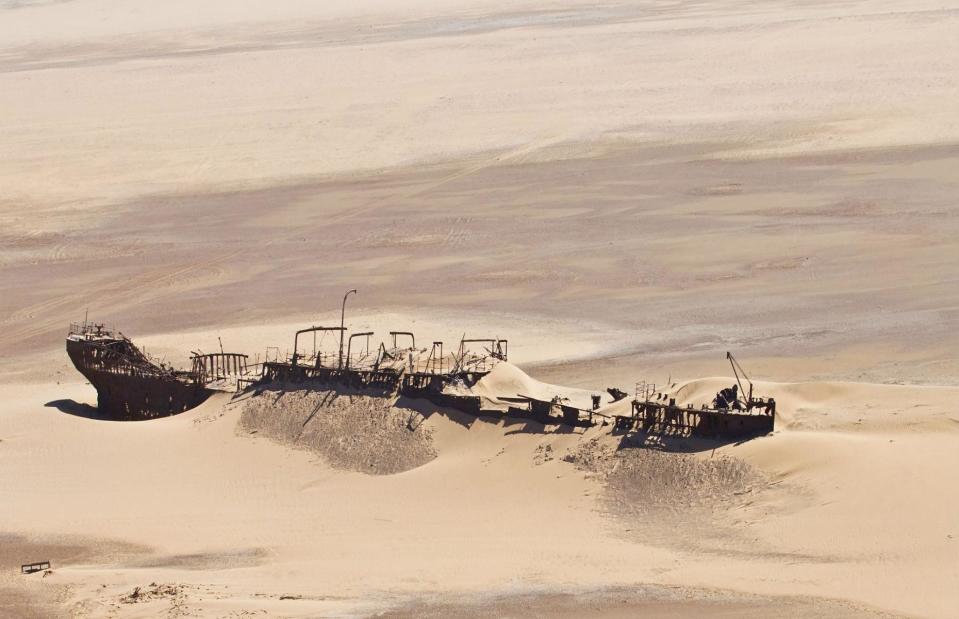
Cezary Wojtkowski/Shutterstock
Namibia is one of the most spectacular places in the world to view eerie shipwrecks for yourself. Its Skeleton Coast is home to thousands of shipwrecked vessels scattered along the coastline, having failed to navigate the tempestuous seas and angry winds. One of these is the Eduard Bohlen which is stranded in the middle of the desert, about a quarter of a mile from the shoreline.
Eduard Bohlen, Namibia
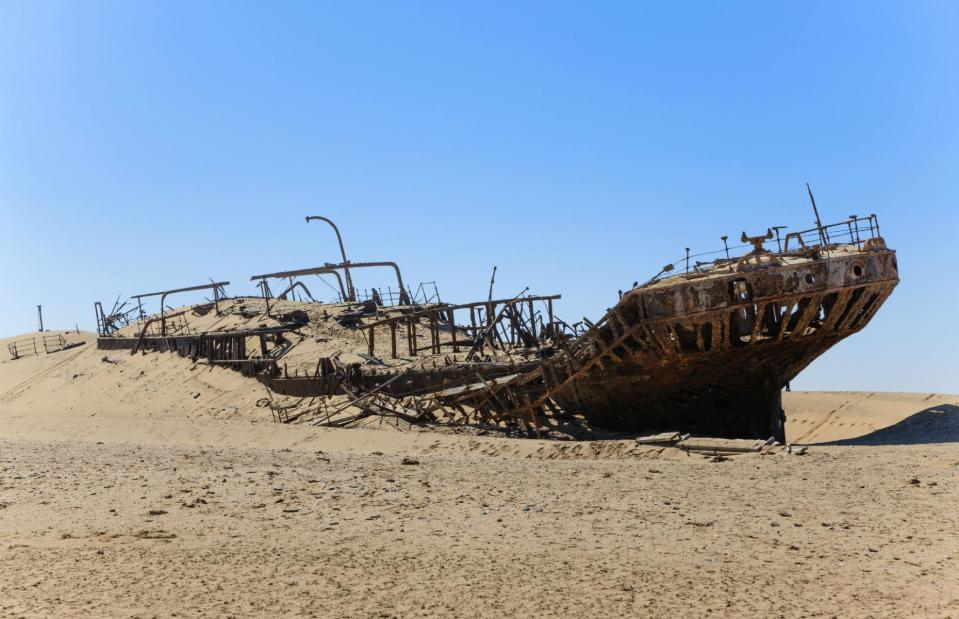
Radek Borovka/Shutterstock
A former German cargo ship, the vessel ran aground, probably due to thick fog, while it was on its way to Table Bay. Years later, as the desert encroached on the ocean, the ship found its unusual position in the middle of the sand. Usually it's possible to see it for yourself on a flying safari or a guided 4x4 tour from Lüderitz or Walvis Bay.
Zeila, Namibia
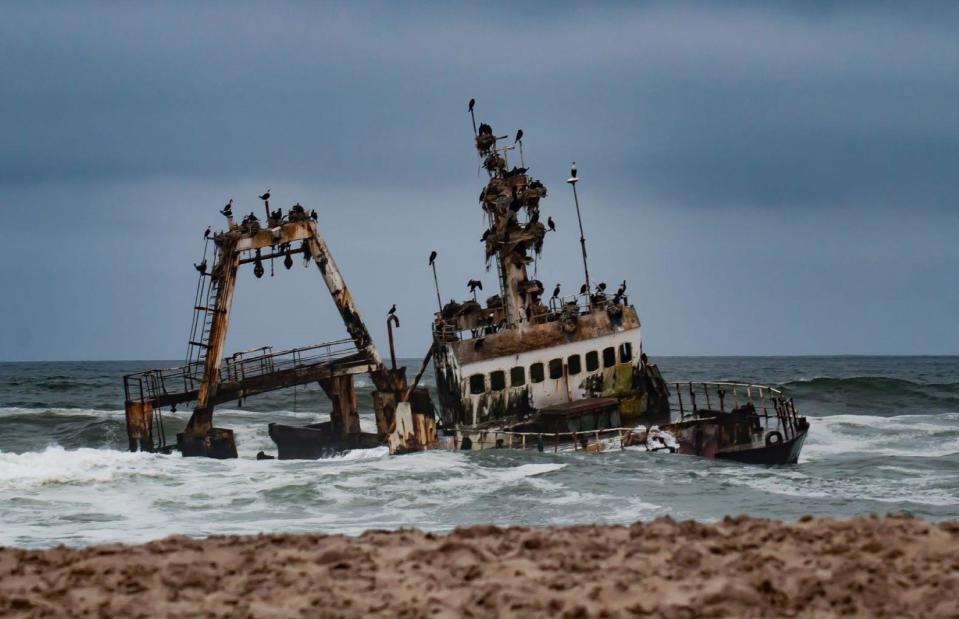
Sam Power/Unsplash
North of the Eduard Bohlen along the Skeleton Coast, this rusty wreck close to the shore is often covered with dozens of sea birds, making it an even more eerie sight. The fishing trawler Zeila ran aground south of Hentiesbaai in August 2008 and has since been at the mercy of the stormy sea.
Zeila, Namibia
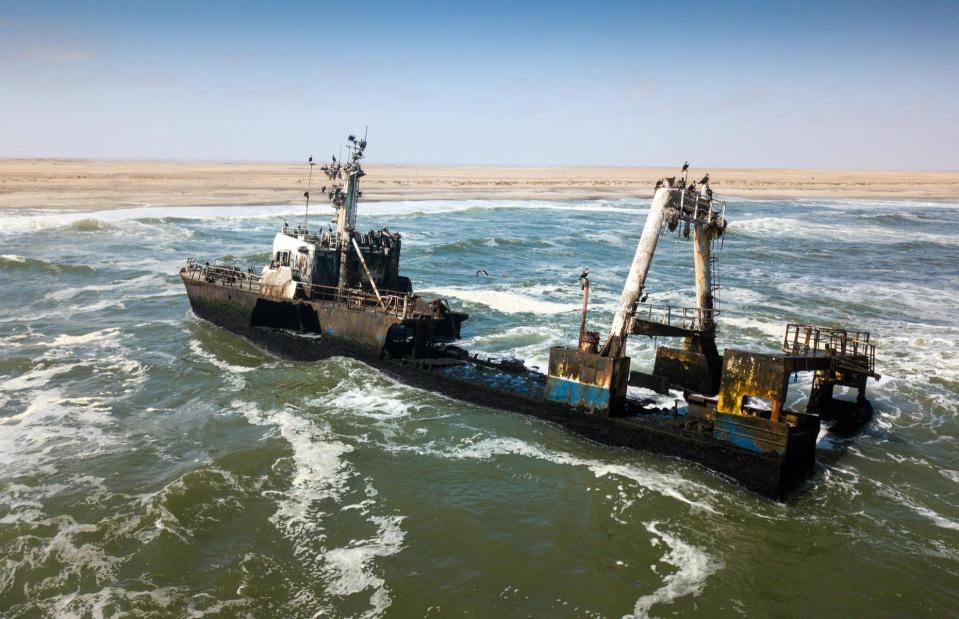
Natalia Golovina/Shutterstock
The vessel was sold as scrap metal to an Indian company but got stranded after it came loose from its towing line on its way to Mumbai. The Zeila is now one of the most accessible wrecks along the Namibian coast even though the sea is too rough to set foot on the decaying ship. It is best seen from the beach, an easy stop off near the popular fishing spot "Die Walle".
HMS Gloucester, Norfolk, UK
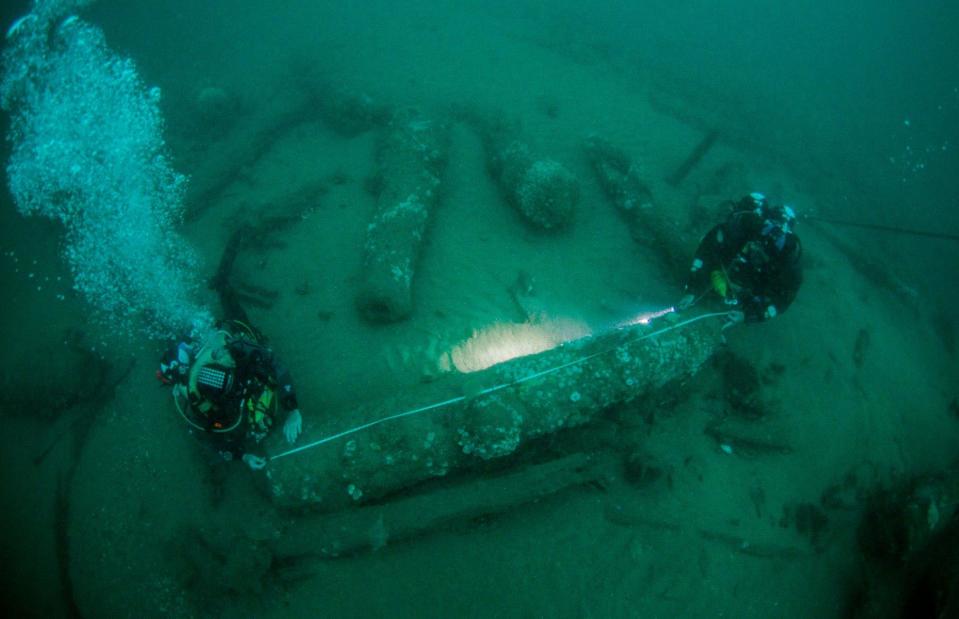
Norfolk Historic Shipwrecks
Touted as the most important discovery since the Mary Rose was unearthed in 1982, the HMS Gloucester warship was discovered off the coast of Great Yarmouth, Norfolk in 2007 – but this incredible find has only just been made public due to security reasons. The vessel sank in 1682 after running aground, resulting in the tragic deaths of hundreds of people onboard. In fact, it had been carrying the soon-to-be King of England, the Duke of York, who just managed to flee the sinking ship in time. If he hadn't, history could have taken a very different course.
The Gloucester, Norfolk, UK
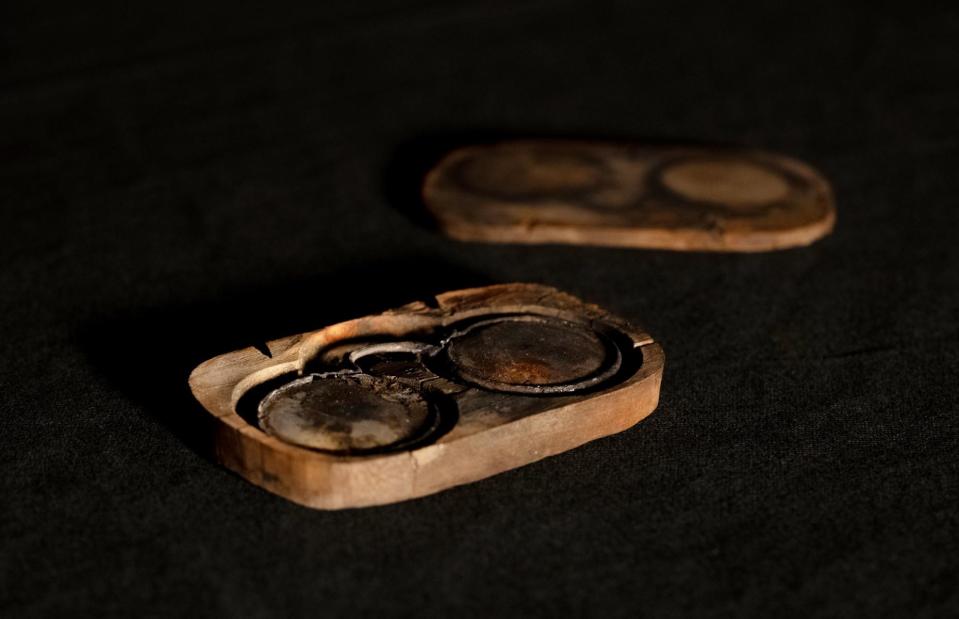
University of East Anglia
Researchers found some incredible items at the site, including the ship's former bell, a pair of glasses preserved in their original case (pictured) and the ship's original cannons. The discovery was made by two brothers, Julian and Lincoln Barnwell, who had been diving off the coast of Norfolk when they came across a cannon lying on the seabed. But it was not until 2012, when the ship's bell was found, that the Receiver of Wreck and Ministry of Defence officially identified the shipwreck. Even after that, the site's location in public waters meant that the discovery could not be disclosed until now.
Mortar Wreck, Dorset, UK
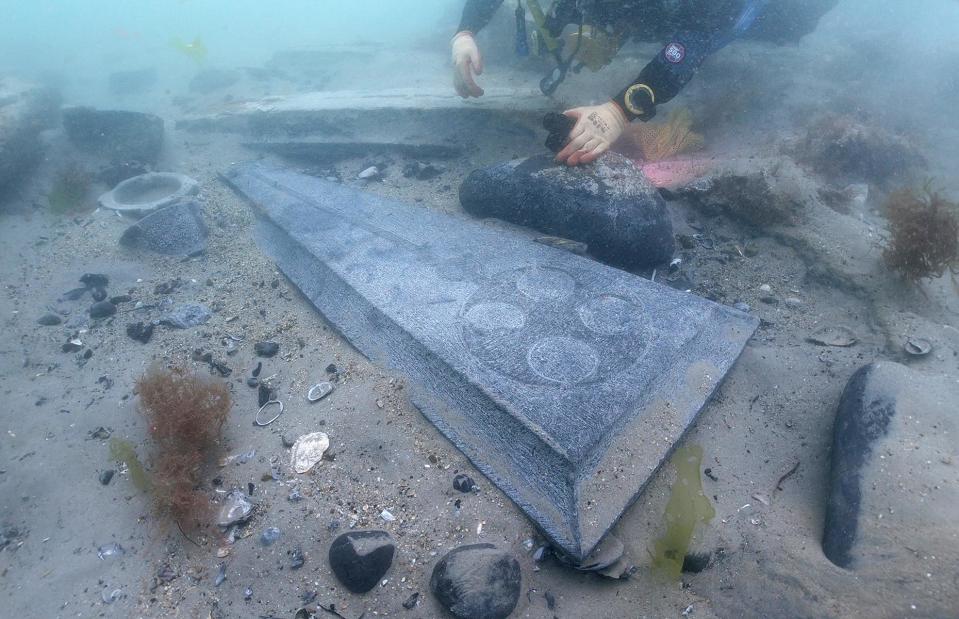
Bournemouth University
A staggering discovery was made in England's Poole Bay, off Dorset's windswept coast. Marine archaeologists from Bournemouth University unearthed the remnants of a medieval ship thought to date back to the 13th century, touted as the earliest English designated wreck that includes the hull. The so-called "clinker ship", made from overlapping wooden planks, had an impressive load of cargo too.
Mortar Wreck, Dorset, UK
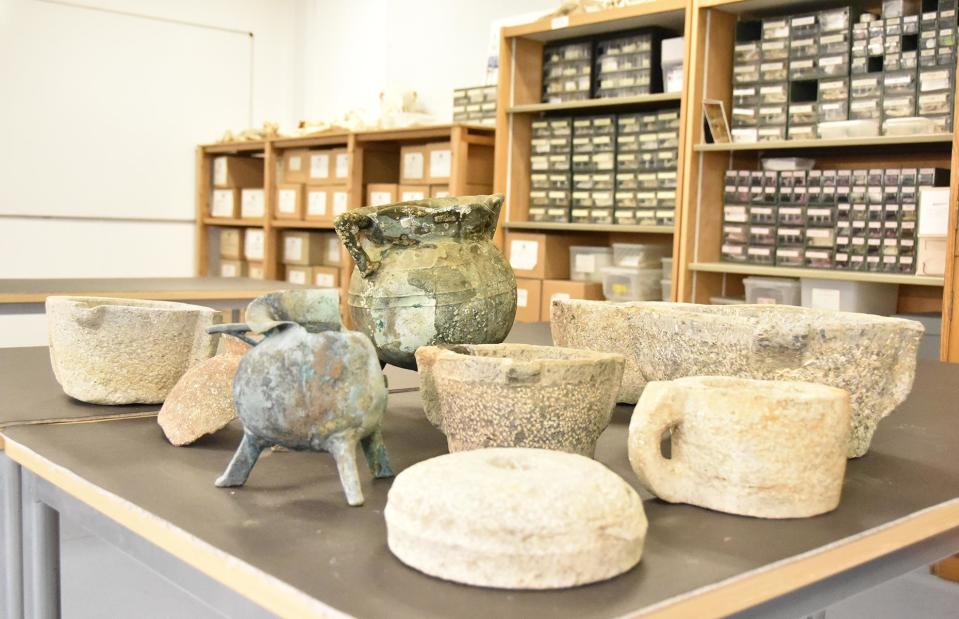
Bournemouth University
It's been named "Mortar Wreck" since its discovered cargo included a large collection of mortars (instruments used for grinding grains, pictured) – they're made from Purbeck stone, a form of limestone quarried off England's South Coast. Purbeck marble gravestone slabs were another star find at the wreck site and, according to experts, they offer fascinating, unforeseen insights into how gravestones were produced at the time.
The Vasa, Stockholm, Sweden
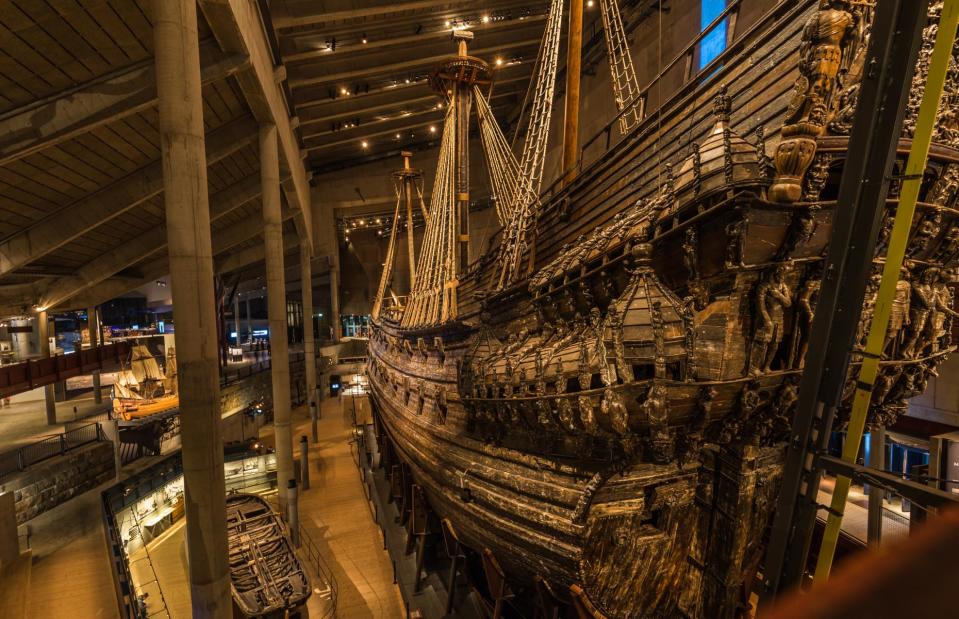
RPBaiao/Shutterstock
At the time it was launched in 1628, the Vasa was the most powerful warship in the Baltic: Sweden's equivalent to the Mary Rose. The tall ship stood at a height of about 165 feet (50m), and her 64 cannons could fire ammunition up to the speed of sound. However, 20 minutes after being launched, the Vasa was blown over by a gust of wind, and sank in Stockholm Harbour. 30 people trapped inside lost their lives.
The Vasa, Stockholm, Sweden
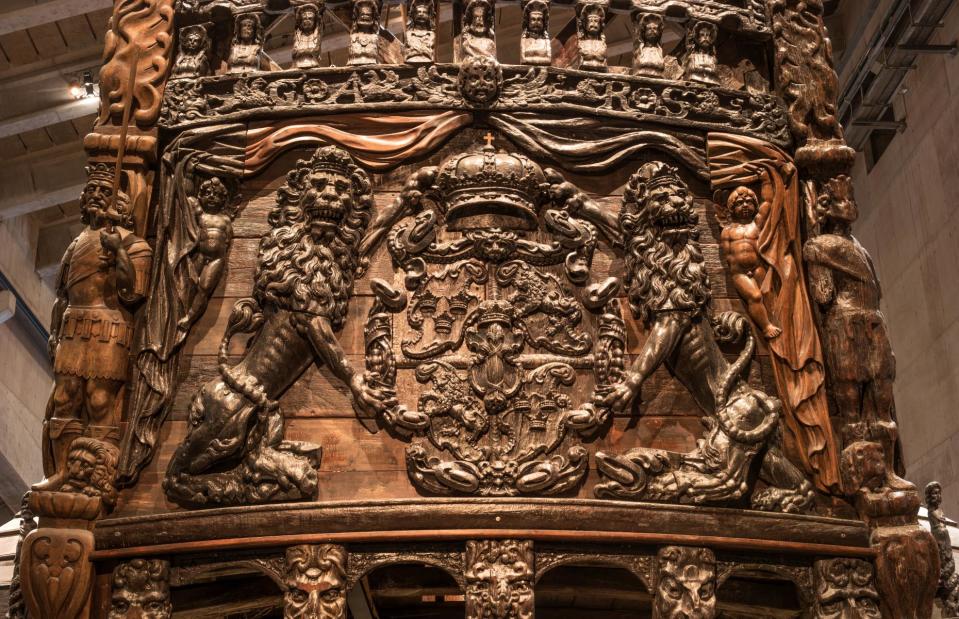
Oleg Proskurin/Shutterstock
The discovery of the Vasa wreck – and its raising from the sea bed in 1961 – was a momentous event on Swedish television, and divers spent the following years recovering fascinating items like gold rings, intricate stern decorations, and anchors from the mud where the ship lay. Today, the fully-restored Vasa sits in its own purpose-built museum, where you can see what the ship looked like in its full painted glory, and walk beside its creaky decks.
Äpplet, Stockholm, Sweden

Vrak/SMTM
In October 2022, Swedish marine archaeologists confirmed a truly exciting find: the sunken wreck of the Äpplet. The sister ship of the Vasa, the Äpplet (meaning 'apple') is a carved 17th-century warship, built with a wider hull than the Vasa to give it more stability. However, after a few decades of service, the Äpplet was deemed unseaworthy and sunk in 1659 to form part of a marine barrier, which prevented enemy ships getting into Stockholm's harbour.
Äpplet, Stockholm, Sweden
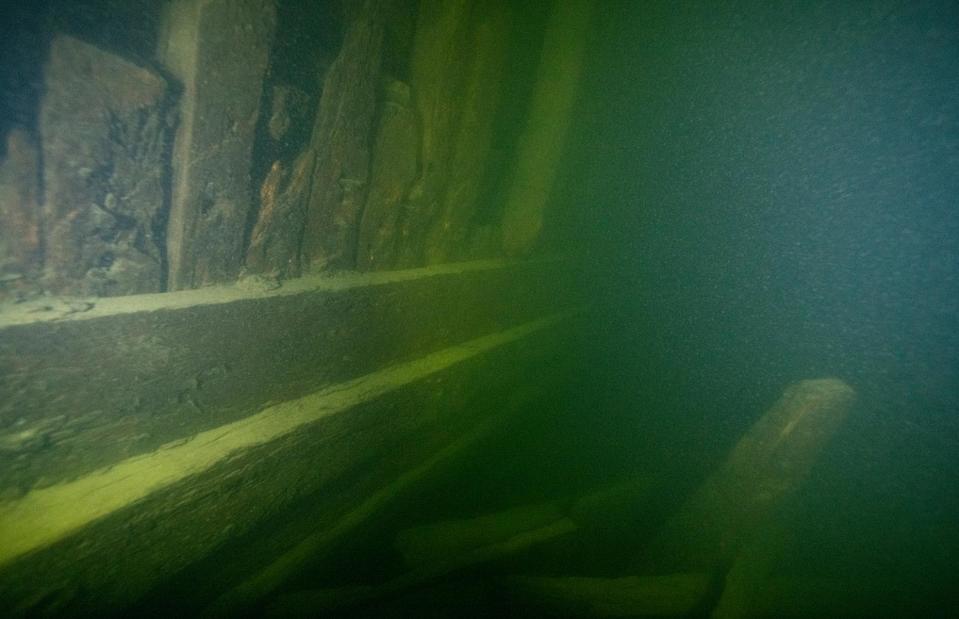
Vrak/SMTM
Pictured here is a cannon port, which like the Vasa, held one of 64 cannons. Knowing how significant the Vasa discovery had been, marine archaeologists were surveying the sea bed and searching for the Äpplet wreck for years. The Äpplet's discoverers say it will "help us understand how the large warships evolved... [into] seaworthy behemoths that could control the Baltic Sea – a decisive factor in Sweden’s emergence as a great power in the 1600s”.
Medieval shipwreck, Mjøsa, Norway

FFI/NTNU
In November 2022, researchers discovered an incredible medieval shipwreck at the bottom of Norway's largest lake. The frozen-in-time wooden ship, which is thought to date between the 1300s and 1800s, was found during a mission to map the 140-square-mile (363sq km) lakebed using sonar technology – this image was captured using sonar imagery.
Medieval shipwreck, Mjøsa, Norway
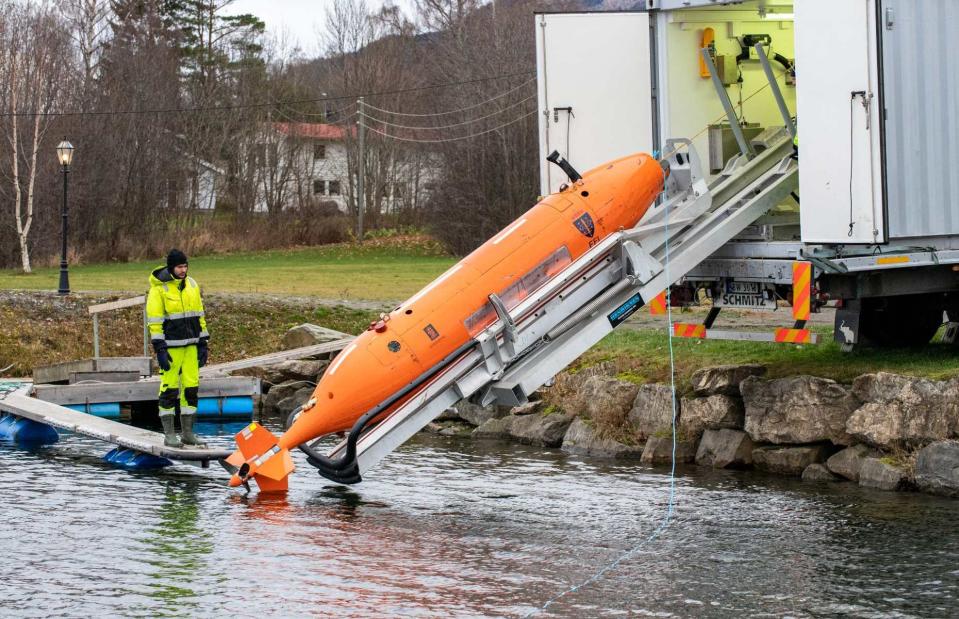
FFI/NTNU
The discovery was made using the underwater vehicle Hugin, pictured, which is operated by the Norwegian Defence Research Establishment. Surprisingly, the ship was strikingly well-preserved, thanks to a combination of the freshwater environment and a lack of wave action. Archaeologists are still studying the vessel to determine where it came from and what it was used for, but so far they've identified that it seems to have been built using a Norse technique with overlapping wooden planks. Researchers believe the ship likely went down in bad weather.
Now discover the world's most historic ships you can still visit

